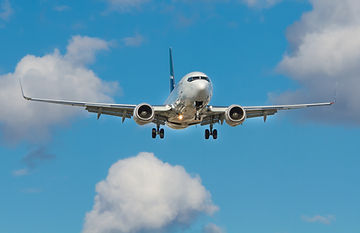
Introduction
This project was funded by the Joint Center for Aerospace Technology and Innovation (JCATI) with a purpose of successfully repurposing the carbon fiber from wing trimmings that are discarded from commercial aircraft. Students created a system to crush the carbon fiber wing trimmings, shred the material, and convey it into an oven where Pyrolysis is used to extract the resin from the carbon fiber. The project was cumulative in a way, as past students progress on the device was expanded on and redesigned to improve the process. The specific portion of the device this project focused on is the conveyance of the material from the shredder to the oven.
Fall Quarter Presentation
Winter Quarter Presentation
Spring Quarter Presentation
Motivation
-
A challenge - This project was a way to provide oneself a challenge and to gain real-world mechanical engineering experience after spending two years of school during covid-times and missing out on a lot of hands-on learning.
-
Environmental Impact - The positive impact that this project has on the environment was a big factor when choosing to do this project. Carbon fiber composites aren't known to be easily recyclable and so the fact that CWU students get a chance to improve this process and help create a more efficient way to so is very motivating.
-
Teamwork / Previous Failures- Another big motivation for doing this project this year is the other students that are working on the JCATI project; Kezyah, Diana, and DJ. Learning to collaborate and come together to create a working carbon fiber recycler will be an experience of a lifetime. Past students in past years have been unable to successfully recycle carbon fiber composites, knowing that this year's seniors could be the first to do it is very exciting and a big factor when it comes to the motivation behind this project.
Initial Design Ideas






Figure 1.1. Initial Design 1
Taylor Miller
Figure 1.2. Initial Design 2
Taylor Miller
Figure 1.3. Initial Design 3
Taylor Miller
Results
After working on this project for three consecutive quarters, or one full school year, the results show that it was a success in the way that it does the job of moving material from one point to another, but unsuccessful in the way that it did not pass all tests nor meet all expected requirements. See below for end product photos and testing results.



Figure 1.4. Side View Conveyor Figure 1.5. Top View Conveyor Figure 1.6. Final conveyor

Figure 1.7. Speed Test Data Sheet
To the left is a table that shows the results of the speed test. Initially, the speed was targeted to be 1 ft/min and was not successfully reached due to having to use a different, higher powered motor. The speed of the conveyor ended up being 2.56 ft/min which did not meet requirements, but is successful in the way that the conveyance system still does the job needed: transporting material from point A to point B.
To the right is the data accumulated from conducting the torque test. The requirement stated that the motor had to provide a min. of 2lb-in of torque because it was expected to only need 1.86 lb.-in. However, testing shows that this was not accurate, and that the actual minimum torque value needed from the motor is 7.76 lb.-in. This explains why the first motor failed. This test proved the analyses unsuccessful but aided in finding a new motor that had the torque capacity to move the belt.

Figure 1.8. Torque Test Data Sheet

Figure 1.9. Torque Testing Force Graph


